Shop
This model of leg armor is based on medieval plate legs typical for the late XIV and early XV centuries. As armor evolved, leg protection changed from its early forms to functional, articulated plate armor. The most essential part thereof is the hip plate. It’s made from one metal sheet and forged to conform to
When you’re deciding on your battle equipment, the kind of articulated plate armor you choose is of the utmost importance. After all, the thigh takes the most severe blows. You raise your shield over your head and there’s nothing left for your opponent to hit other than your upper leg armor. Therefore, it’s important to
In Medieval Europe, full leg armor protection usually consisted of the cuissardes (thigh protection), kneecaps, greaves (shin protection) and sabatons (foot protection). The completed leg harness was an essential part of the full plate armor. It developed from the formed metal plate that served as knee protection. The knees were the most important and vulnerable
Bascinet shaped helmets with a flat face visor are by far the most popular amongst sportsmen engaged in medieval full contact combat in both buhurt and duel categories under HMB, IMCF and SCA regulations. The bascinet was developed from a helmet that looked like a small hat. Medieval knights wore it under a much heavier
Helmet (from German “helm”) is the main part of any armor kit. The most popular type of the helmet is Bascinet. From it’s beginning Bascinet was used as supplement defense. But after it got a visor (German “Visier”, French “visiere”, Italian “visiera”) this type of helmet became a separate protection armor. Bascinet Spoleto type-2 is
Bascinet type helmet with the houndskull (dog-faced form) visor. Klappvisor (Kplappvisier) – it’s the way the visor is attached to the skull of the helmet. This method was developed in Germany around c.1360-1370. The apex point of the conical skull is slightly moved back. Such Houndskull Bascinets were the most spread helmets used by knights
From around 1330 until about 1410, bascinet shaped helmets were the most popular helmet type in medieval Europe. The bascinet was developed from the skull cap, and since approximately 1330 the bottom edge of the high bascinet became more extended and elongated to cover the ears and upper part of the neck. Starting in about
XIV century French arm armor, based off a set made for Charles VI (preserved in Chartres Cathedral in France). This arm harness is fully joined with rivets but allows for a large degree of freedom of movement. Our French Arm Armor is secured with leather straps and steel buckles. The steel is painted on the
Charles VI (1368-1422), King of France, was called the Beloved and the Mad (French: le Bien-Aimé, le Fol or le Fou). This helmet is based on the bascinet of Charles VI from the collection of “Le Trésor de la cathédrale” (Chartres, France). It has a so-called “sparrow’s beak” visor (french: visière à bec de passereau).
A padded gambeson is worn under armor. It serves as a cushion and softens the impact of hits. Padding should not be too thick, otherwise it’s hard to bend your arms or legs (in the case of quilted stockings). What’s more, with thick padding – there’s a higher risk of overheating during tournaments. Our Tricolor

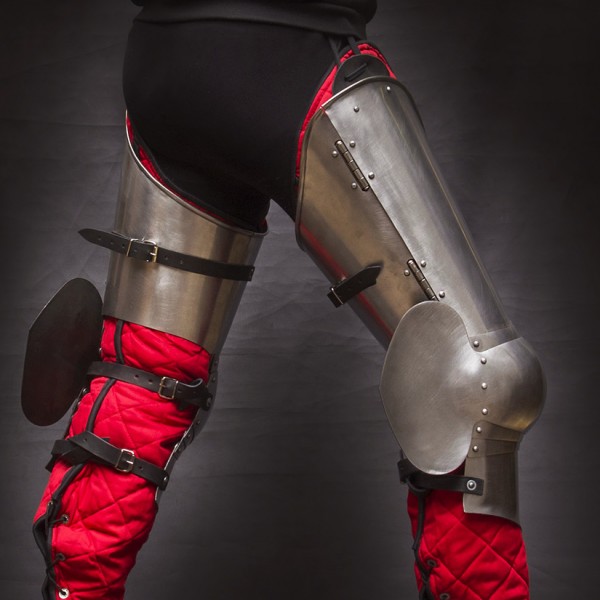
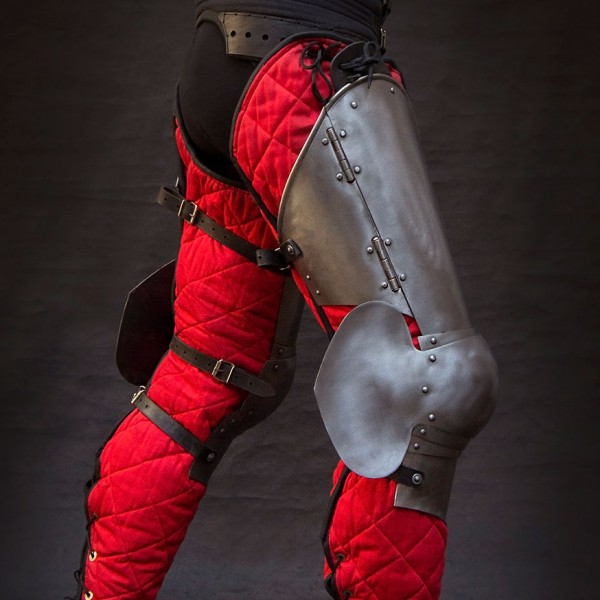

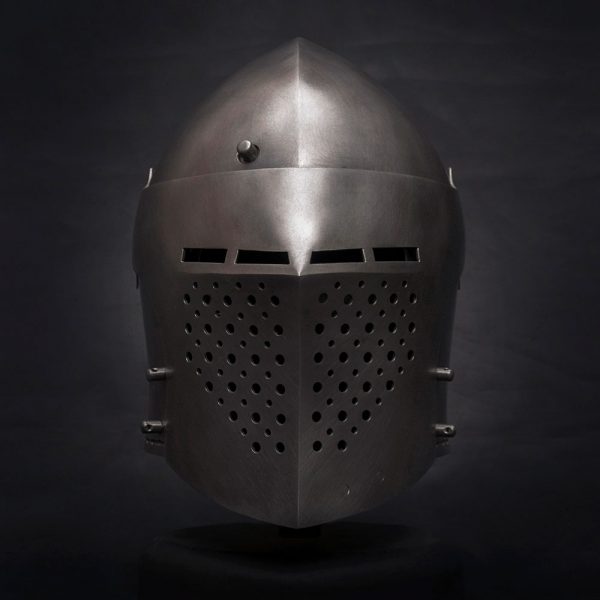
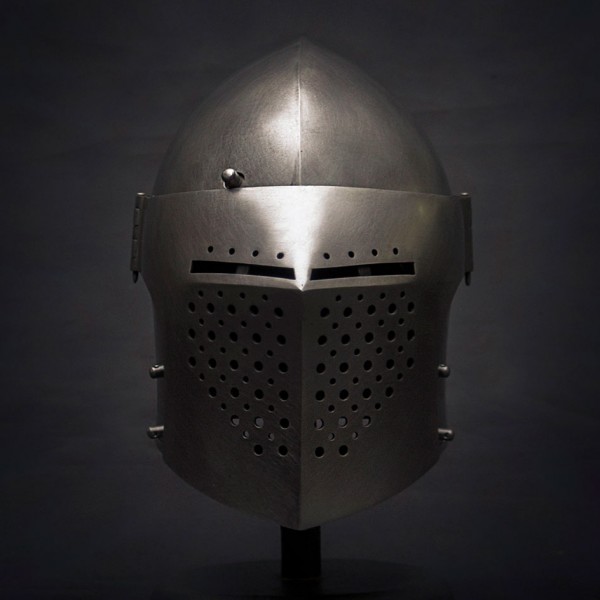
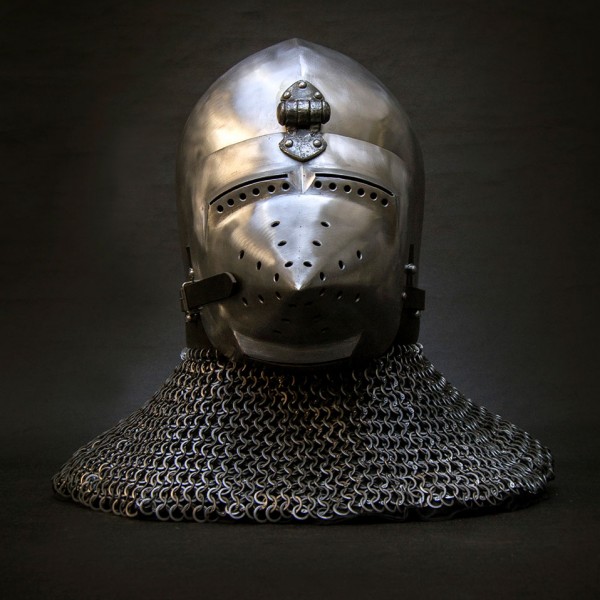
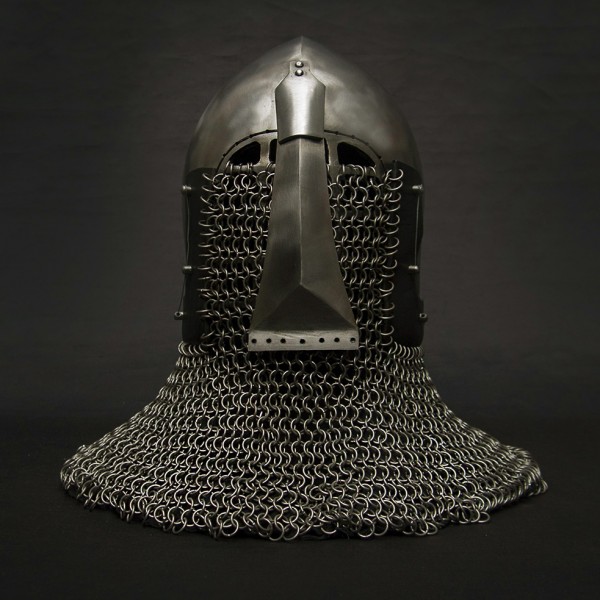
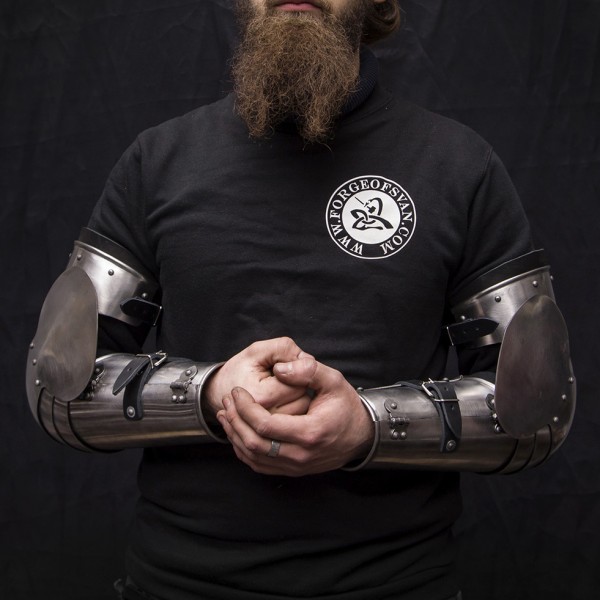
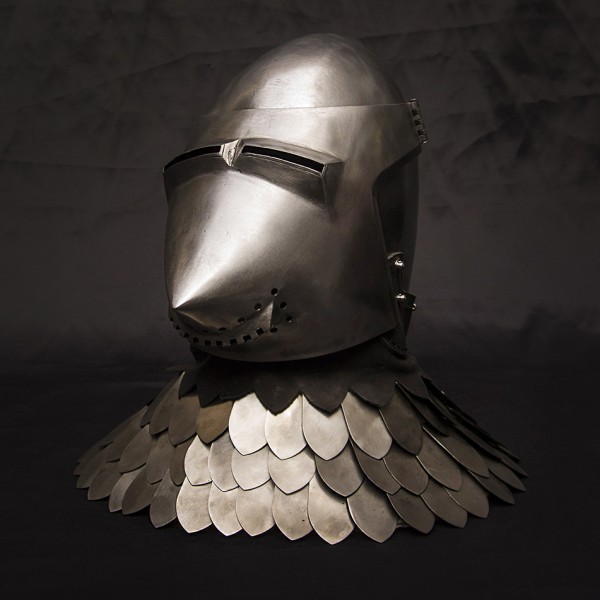
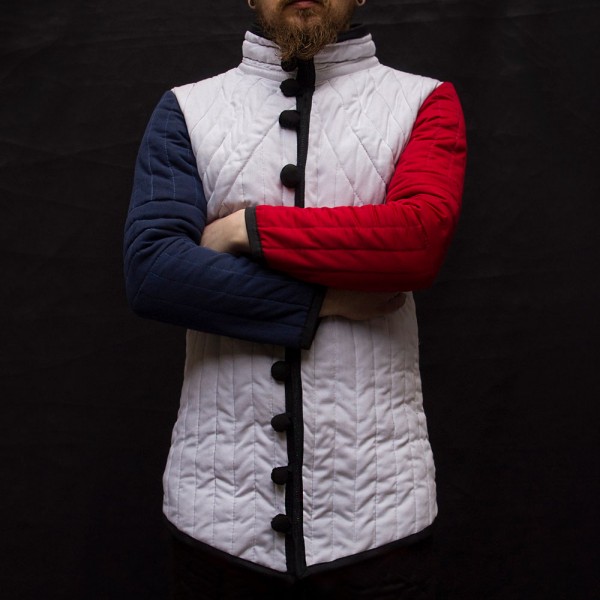
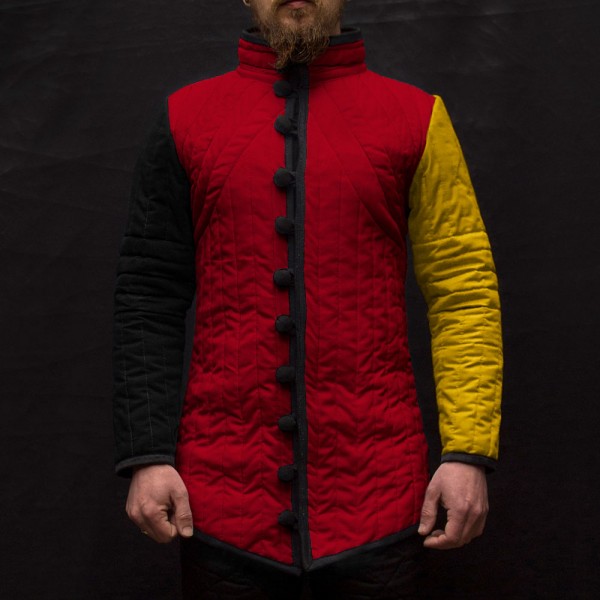
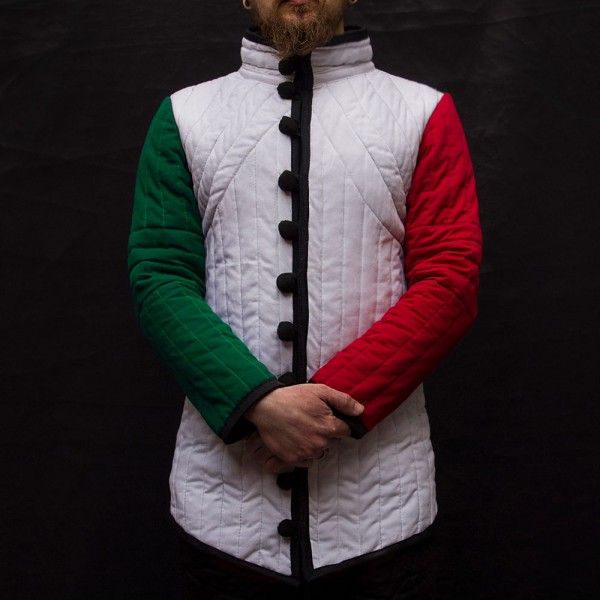
 Shop
Shop